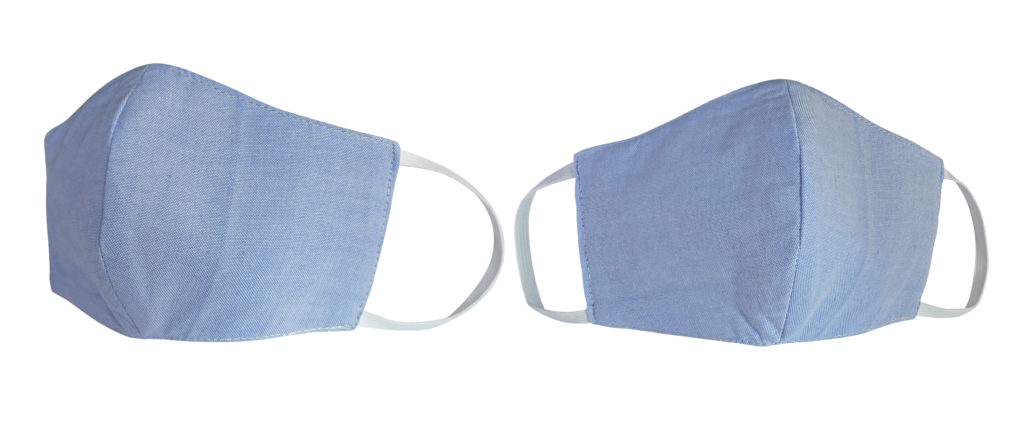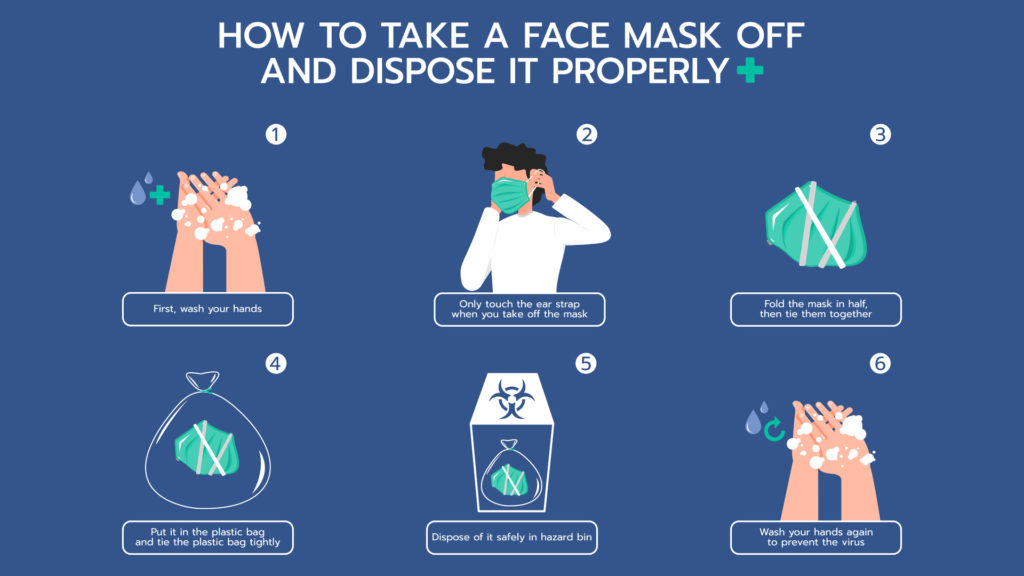Free UK mainland delivery on orders when you spend £100.00
Thanks to the Coronavirus pandemic, many of us are following advice from the government to protect ourselves. Whilst social distancing and good hand hygiene are the most crucial ways to do this, face masks or coverings can be a useful additional measure.
Quite recently it has been made mandatory to wear a face covering on public transport, in hospitals, shops and other indoor settings in both England and Scotland and other enclosed spaces where social distancing may not be possible. There are however some exceptions to this, young children, those with a disability or a respiratory condition or anyone travelling with a person who relies on the ability to lip read in order to communicate.

There are many differing opinions among experts about how effective face masks are for the general public, research is continually developing but the government's advice is similar to measures put into place around the world.
Scientists agree that you should not be buying medical grade masks such as N95 respirators because they are not suitable for everyday use and can take away crucial supplies from frontline staff who require them to carry out their working day.
If you need to wear a face mask or covering it is extremely important to make sure that it fits well or you could increase your risk of infection.
It has been stated that under some circumstances, homemade cloth face coverings can help to decrease the risk of transmission.
When we talk, sneeze or cough we exhale both larger droplets and smaller aerosol particles and the purpose of a face covering is to catch or block them to prevent them from spreading. This is critical evidence because there is evidence that these particles can survive for hours or even days. Face masks and coverings are not designed to protect the wearer but to prevent against the transmission of the virus to others if the wearer is asymptomatic.
Evidence is not as clear as it is for hand washing and social distancing, therefore masks should be used in addition to these practices and not instead of.
Different types of masks provided different levels of protection. Surgical grade N95 respirators offer the highest level of protection, next to regular surgical grade masks but should only be used by those in the healthcare industries. These types of masks can be expensive, are in relatively short supply, greatly contribute to landfill and can be very uncomfortable to wear especially for long periods of time.
As we stated earlier evidence is less clear for cloth face coverings and this is similar for paper style face masks. However using one of these types can still reduce the transmission of Covid-19 particles, particularly if the covering is tightly fitted around the face, but it has been suggested that even a looser fitting scarf or bandanna type is better than nothing.
We supply 3 ply, non surgical, non woven disposable face masks that offer a high filtration rate. They allow you to breathe freely and with elastic ear loops, they are comfortable to wear.
Reusable cloth masks are becoming more readily available in shops and to purchase online. If you have some basic skills it can be easy to make your own. When choosing a cloth mask, it’s worth looking for one with multiple layers and one that is produced using heavy weight cotton. These types can be washed effectively after every use and will lower the impact on the environment by decreasing contributions to landfill.

Always wash your hands well with soap and water before putting on a mask. The mask should cover your nose and mouth and there should not be any gaps between the mask and your face. You should avoid touching the mask whilst you are wearing it but if you do, immediately wash your hands. You should replace the mask when it is damp. When taking off a mask you should use the elastics to do so, avoid touching the front and you should safely dispose of the single use mask into a closed bin or, if the mask is reusable, place it straight into the washing machine.

If it seems too good to be true, then it probably is. Some sellers may be hiking prices because they know people will buy them anyway but others have been producing fake medical grade masks.
There are some ways to tell if a surgical mask is a fake:
Before you place an order for face masks it will be valuable to do some research. Make sure your mask fits properly and continue adhering to the government's guidance on social distancing and hand washing procedures to protect both yourself and others around you. We hope you have found this article useful, from all of us at Advanced Disposables, stay safe.
Sources:
https://medium.com/@jayaone12345/how-to-know-if-your-mask-is-the-real-3-ply-surgical-mask-test-it-before-you-place-large-orders-332c4231a897
https://www.which.co.uk/reviews/face-masks/article/face-masks-where-to-buy-them-and-how-to-make-your-own
https://www.theguardian.com/world/2020/jun/23/coronavirus-what-kind-of-face-mask-gives-the-best-protection-against-covid-19